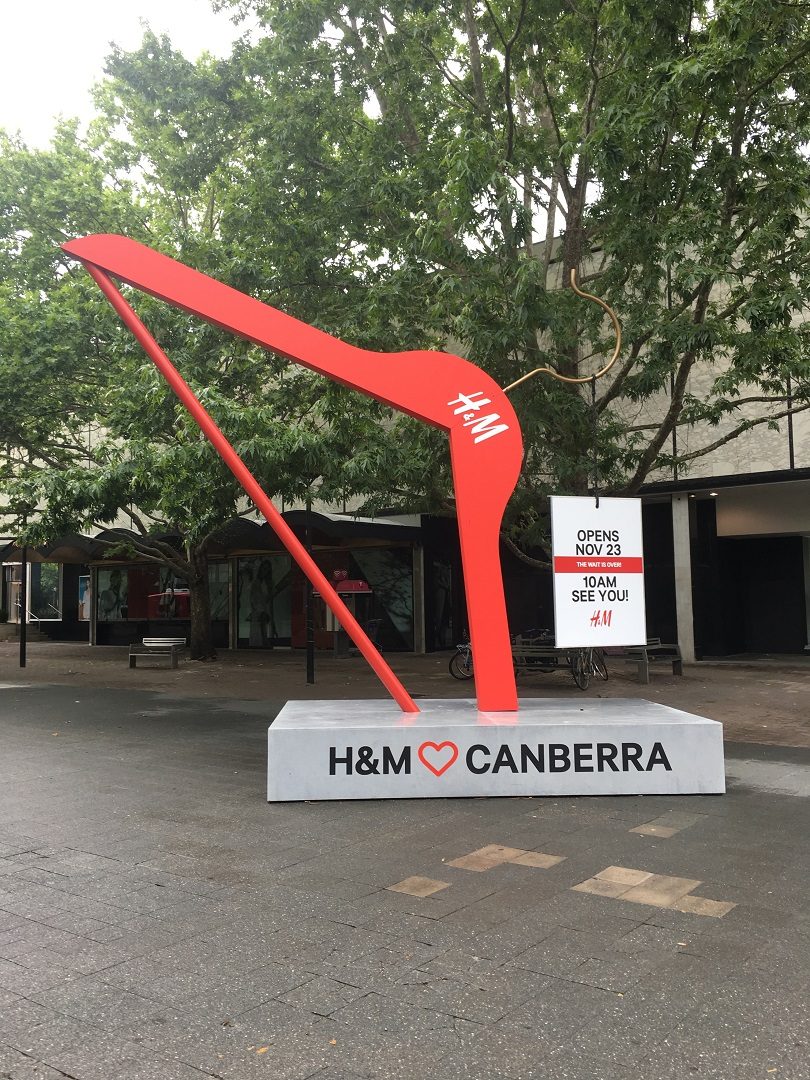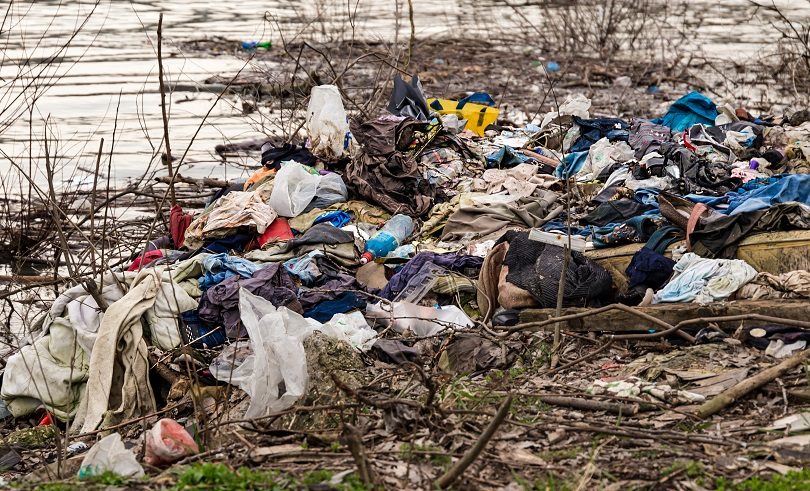
Photo: Mohamed Noor Rizal.
Canberra has been swept up in a fashion frenzy since late November when H&M opened its store in the Capital city. No longer do we have to wait until our next trip to Sydney or Melbourne to get our H&M fashion fix!
I wonder though, how often do we think about who makes our clothes, how they’re made and why they’re so affordable?

Photo: Nina Gbor.
For several years, there’s been a fast fashion phenomenon in the fashion industry, where production processes are accelerated to get the latest fashion trends into the market as cheaply and as fast as possible. These retailers no longer release fashion lines on a seasonal basis, but instead, many of them now introduce several new fashion lines every week! Many consumers complain that fast fashion clothes fall apart after the first wash or use, but this is part of the business model to encourage consumers to buy new clothes on a regular basis, which is highly lucrative for these retailers. This profit-driven business model cultivates a wasteful, “wear once and throw-away” culture amongst consumers. Although this means we get to look glamorous on a tiny budget and change up our wardrobes at the same speed that we get fast food, there are other necessary factors to consider.

Poem by Hollie McNish, written for Fashion Revolution fanzine. Photo: Fashion Revolution.
Fast fashion clothes make it possible for you have the latest stylish trendy outfit usually for less than the price of a meal or a coffee. But the sad truth is that a garment worker somewhere is probably paying a heavier price for your indulgence. While you’re nabbing a bargain at a store like H&M, it’s possible that the person(s) who made that piece was not paid a fair, livable wage. This is probably why the clothes are so cheap! They might have even been forced to work in very bad working conditions and may have been treated with little or no dignity and respect. The Rana Plaza tragedy is perhaps the most significant example of some of the incidences that occur behind the scenes where fast fashion production is concerned.

Photo: Supplied.
On the environmental side of things, the fashion industry is now one of the most polluting industries in the world. Fast fashion production depletes non-renewable resources, uses toxic chemicals and dyes that infiltrate the water systems and farmlands, and have terminal health consequences on not only the garment workers but the rest of the communities where factories are located. Indeed, brands provide jobs for these workers but that does not mean their rights, dignity, and health should be ignored.

Photo: Supplied.
Most fast fashion clothes are made from synthetic fabrics such as polyester, nylon, and acrylic. These are constructed from a type of plastic made from petroleum, which means they could take up to a thousand years to biodegrade, all the while releasing toxic gas like methane into the environment.
So what does this oversupply of fast cheap fashion mean for Canberra? Like many other communities, it takes away from our local economy and local businesses, distracts people from creating their own unique style and adds to our already massive fashion waste that ends up in a landfill.
In their War on Waste series earlier this year, ABC TV revealed that in Australia we send 6,000kg of textiles to the landfill every 10 minutes! An article from the University of Queensland stated “Australia is the second-largest consumer of new textiles after the US, averaging 27 kilograms of new textiles per annum. We buy it, wear it once or twice, get sick of it—or realise it’s gone out of fashion—and bin it only to begin the cycle all over again.”

Photo: Lehan Zhang.
An additional fast fashion retailer in Canberra is likely to mean that our fashion waste will very likely increase. Canberra Area Manager for Salvos, Tony O’Connell confirmed that Salvos sends approximately 194,000 pieces of clothing and accessories that cannot be sold in the Canberra stores to Sydney about every 2 weeks. Salvos Eco Stylist, Faye De Lanty also said that Salvos is only able to sell about 15% of all donations. The quality of most fast fashion clothes is so poor that op shops are unable to resell them. Because of the composition, they cannot be repurposed for other things, therefore they end up in a landfill.
As consumers, we have the power to change things that are unjust and blatantly wrong. When you spend your pennies at a business, you’re supporting that business to continue to grow their profits and operate in the way that they’re operating. For billion-dollar fashion labels, it will take relatively little effort for them to authentically ensure that all workers are treated fairly, and production is done with minimal environmental damage. We’re in an era where the social enterprise business model that trades to deliberately improve communities, tackle social problems or help the environment can be lucrative.
I love style, but I believe looking fabulous does not need to come at the cost of peoples’ lives or the planet. If you feel the same way, here are a few things you can do to help shift to a healthy fashion culture:
- Join the Fashion Revolution and use the hashtag #whomademyclothes. Hop on to the social media accounts of the fashion labels that you like and ask them to publicly disclose their supply chains and what they’re doing to mitigate exploitation of garment workers;
- Get off the fashion trend-mill. Choose well, buy less and make it last. Ignore fashion trends and build a wardrobe from clothes that work for your personality, lifestyle or ones that are made of natural fabrics.
- Shop preloved: op shops, clothes swaps, markets and garage sales.
- Support local Canberra businesses such as Sash & Belle, Rockstars & Royalty, Zilpah Tart, MAAK, Wombat & Poss, Pure Pod, Every Thread Counts, Gungahlin Collective, Trove Canberra, Christian James, Thunder Thighs, Papel Paper, Cardif Collective and The Paris End.
- Read ‘Building a Conscious Wardrobe’ by Leiden Magazine and Wardrobe Crisis by Clare Press.
When we feel tempted by fast fashion glossy advertising, or feeling swept up in the trendy fashion hype, it might be worth taking a moment to ask what the real story is behind the clothes we are being sold. To learn more about fast fashion, watch The True Cost documentary showing online and on Netflix.
Do you ever think about how your clothes are made? Let us know your opinions in the comments section below.












